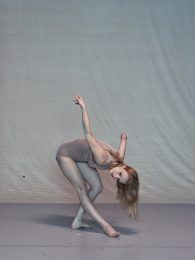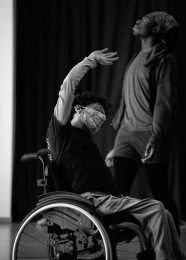“How I shamed the ballet world” – Candoco’s response

Firstly, thank you to Christopher Hope for sharing his daughter’s story and for Fenella Kennedy’s passionate response. With over 2000 shares of the original article, it is a contentious issue that has clearly touched, shocked, and united the dance community and beyond. Candoco Dance Company has always believed in the power of change from the ground up, and while there is no easy solution, the more heads and hearts we can engage in the conversation, the closer we will get to making dance more inclusive and accessible to all.
It’s encouraging to hear that the ISTD (Imperial Society of Teachers of Dancing) has already started exploring ways “to develop examinations suitable for dancers with disabilities” and the Education Minister, Nick Gibb, has initiated a ‘summit’ for examination boards to come together on the issue.
I don’t wish to comment specifically on the approach of the ISTD or any other syllabus or examination board, instead I’d like to take this opportunity to offer an argument for more inclusive practice at the early stages of a child’s dance training and development. This draws on the success of our youth class programme and youth company, Cando2, as well as my experience of the training and development of our Candoco dancers.
We believe that group learning has significant benefits for the individual. We learn from the questions others ask. We are inspired by different approaches to overcoming a challenge and responses to a new opportunity. Different body shapes, sizes and disabilities raise new questions and encourage individuals in the class to question their own technique. We believe this fosters a deep understanding of one’s own body as well as of the technique itself.
Working with our young dancers, we encourage a reflective, not copycat, approach. We ask that they observe, listen, and importantly, reflect, on the skills, techniques and movement principles they are being taught. And, crucially, our teachers reflect on the class, and in turn, they too learn and develop.
Excellence, rigour and improvement are imperative in maintaining the quality of our teaching and creative output. And, if learning can embrace diversity, so can assessment. We believe it is about setting criteria that assess different manifestations of specified movement principles. Even the most specific movement principle can be made relevant to the individual for assessment purposes.
For us, this means being clear about the skills our students are expected to learn and measuring their improvement in relation to these specific principles. Difference is not a threat to these principles; it is what drives the evolution of our art form.


